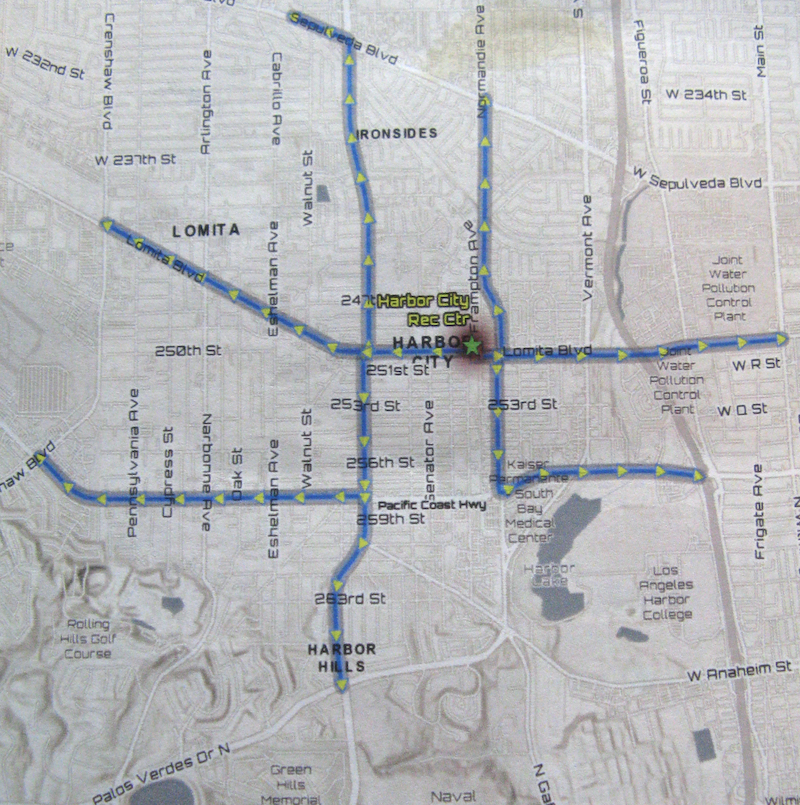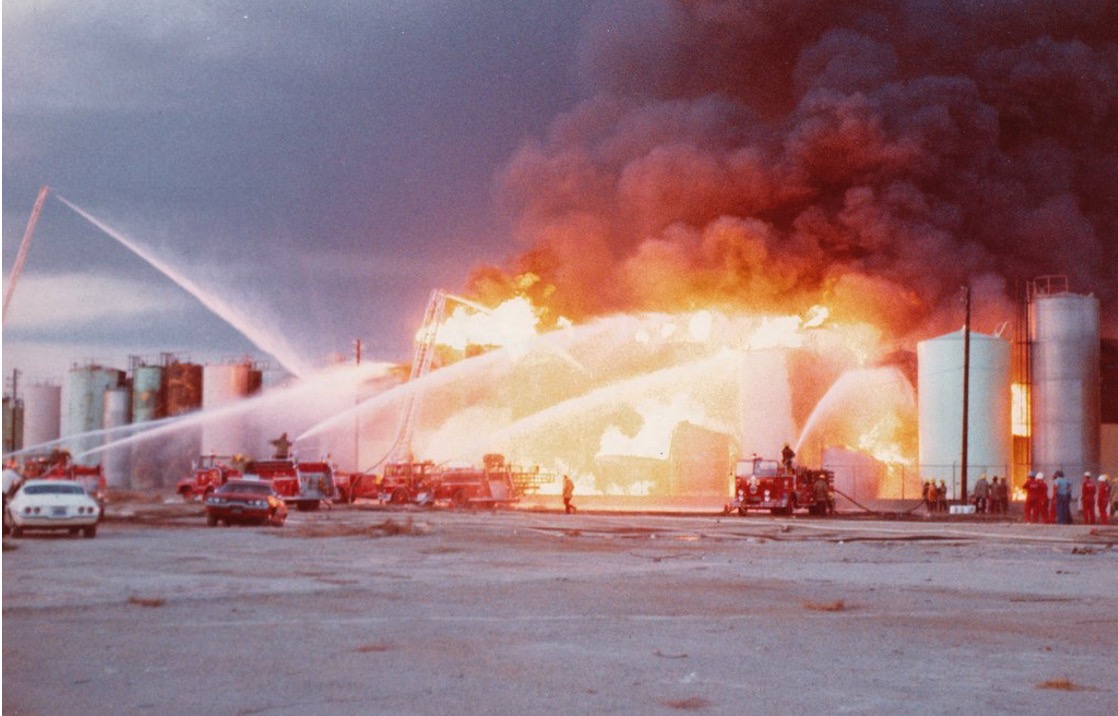Comments
GELFAND’S WORLD - If you live in the city of Los Angeles, you live in risk of fire or explosion due to the presence of refineries, manufacturing plants, and the harbor. Gasoline is carried on tanker trucks throughout the city, and of course there are the natural gas pipelines. As we have recently seen from a railway incident in Ohio, people can be put at risk from any number of things. Just imagine the effects of a toxic release of fluorine, a liquid petroleum tank spill, or a derailment.
So let me take up a concern I have been voicing over the past decade. As a San Pedro resident, I have been asking about the prospect of a necessary evacuation should there be some sort of toxic gas release from the port or an out-of-control refinery fire. I was always told that they have a plan, but they couldn't tell me the exact details and routes because evacuations are designed on the spot, and necessarily involve a lot of local details, the type of fire or explosion, and so forth.
I was always a little skeptical of these responses. Maybe I was just getting a canned answer to a standard question. This past weekend, the Los Angeles Fire Department put their money where their mouth is and showed us how such an evacuation would be designed and practiced. The answer came in the form of a seminar at the Harbor City Recreation Center which taught about the process of mass evacuation.
What did I learn?
The exercise was ostensibly about a tanker truck overturning and catching fire on the 110 Freeway. No, the LAFD did not shut down the freeway, although they joked about the level of complaints they would have had to face had they done so. Instead, we engaged in what you might think of as a thought experiment. This was carried out in front of the locals at the Harbor City Recreation Center, which is just a few blocks from the 110, and would have been affected by toxic gas had there been a real incident.
Various officials from the Fire Department talked about their duties in controlling such an event and trying to save lives. I can't testify to the veracity of what I was told because I am not a fire fighter, but the core of what we heard is that the people in the department are in training basically every day of their working lives. They think about gasoline fires and how to handle them, they think about an explosion such as happened in San Pedro back in the 1970s, and they think about dock fires. Then they drill.
We heard essentially this same description from three or four officers from different agencies including LAFD, LAPD, the Highway Patrol, and the city's Emergency Management Department.
We were told that the process of evacuating people depends on the circumstances, which include what kind of disaster or toxic release is happening, how many people live nearby (and exactly where), and what routes exist for getting people out of the area. We heard something similar from each of the speakers, told from their particular agency's perspective.
Designing and ordering an evacuation can be critically dependent on things like whether the main road out of the area is engulfed in flame or under water, and how many cars you can move through any one point in the next few hours. Readers will remember that evacuation of parts of Malibu by way of Pacific Coast Highway during the recent fire was an example, in the sense that thousands of people evacuated with little loss of life, and most of them griped about how slow the traffic moved.
In this exercise, the LAFD considered the question of getting people evacuated from the neighborhood around the recreation center where we were meeting. They created a map showing how people could evacuate in any of 4 directions -- north, east, south, and west, because that is how the streets are laid out -- and how they would connect with cross streets as part of their evacuation. They put together a flier labeled "Sample Evacuation Routes" and handed them out. We've tried to provide you with a reproduction of that map in order to show the result of such an exercise.

In total, this was a useful exercise, in that the public (including me) got to hear a pretty intensive presentation from a lot of different officials from LAFD, one refinery official, the LAPD, and even the CHP. Even the vastly important but underfunded Emergency Management Department was there to explain their mission.
The main complaint about the event came from the highest ranking LAFD officials, who explained that they were disappointed that they did not have hundreds of people in attendance. It's a fair statement, but you've got to start somewhere. This presentation, slightly modified, should be taken to other parts of town. I would like to see a slimmed down version (this one went on for over two hours) presented in San Pedro. I would suspect that other parts of town which have their own natural barriers (Baldwin Hills because of those hills, for example, and the obvious canyon areas along Hollywood and the coastline) be included in the list. And No, I can't tell them how to cut the presentation to an hour, or maybe 80 minutes, but I'm sure that with a little practice this is doable. It helped that they gave out coffee.
The Last Picture Show
Continuing our explorations along Route 110, even if we don't have a song to go along:
There is an old fashioned movie theater, the kind that a few of us will remember from our youth, that still exists in Gardena. It has suddenly gotten media attention, such as the article you can read here. We dropped by the theater to get a feel for this historical charm, and was invited in by Judy Kim, the manager that you can read about in the Times article cited above.
It turns out that because this theater screens first run Hollywood blockbusters, they have to keep it going seven days a week. And apparently, most of the studios require that you show a first run film at least twice a day. There was, in fact, a brand new film involving fast cars and wild driving, the popcorn was hot, and the place is a bit like an old theater back when there were lots of them and they were new.
Kim is proud of the fact that they have a giant parking lot immediately adjacent to the theater, and it is free. Think about that, the next time you drive through Hollywood or down Wilshire.
It turns out that Judy Kim's parents bought the theater back in the '70s, and she is now doing most of the management. Gardena locals are supportive of her efforts, although it is obviously a challenge to keep an old fashioned theater going nowadays. Judy has an interesting history of her own, having gone to law school and fighting a legal action that allowed her to buy the parking lot next to the theater.
We were impressed by how neat and clean the lobby is, particularly in comparison to other old theaters that have been allowed to fall into disrepair or converted into a flea market.
I should point out that there is a small but active community that works to keep old theaters alive. There have been successes in Fullerton, for example. Let's hope that Gardena stays among their number.
Gardena cinema, 14948 Crenshaw Blvd, Gardena, 90249, near the intersection of the 105 and the 110. Schedules can be found here.
(Bob Gelfand writes on science, culture, and politics for CityWatch. He can be reached at [email protected].)






